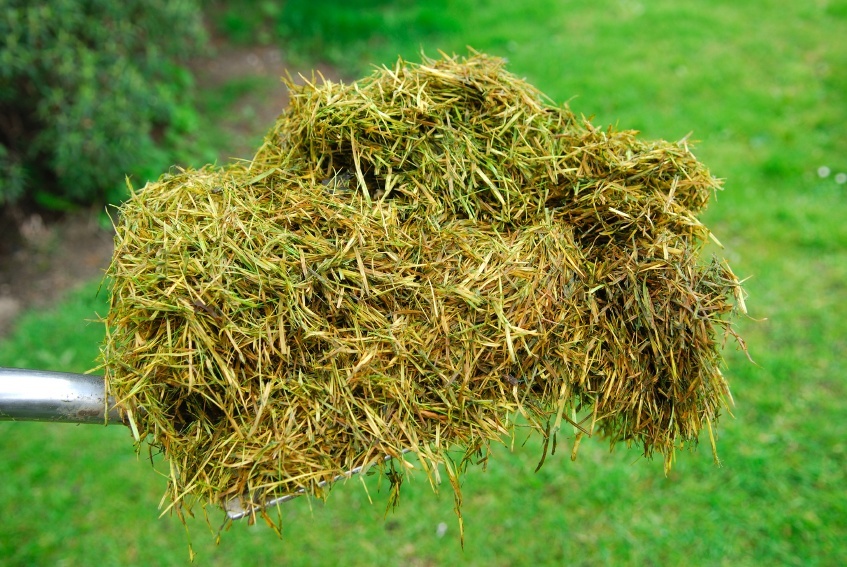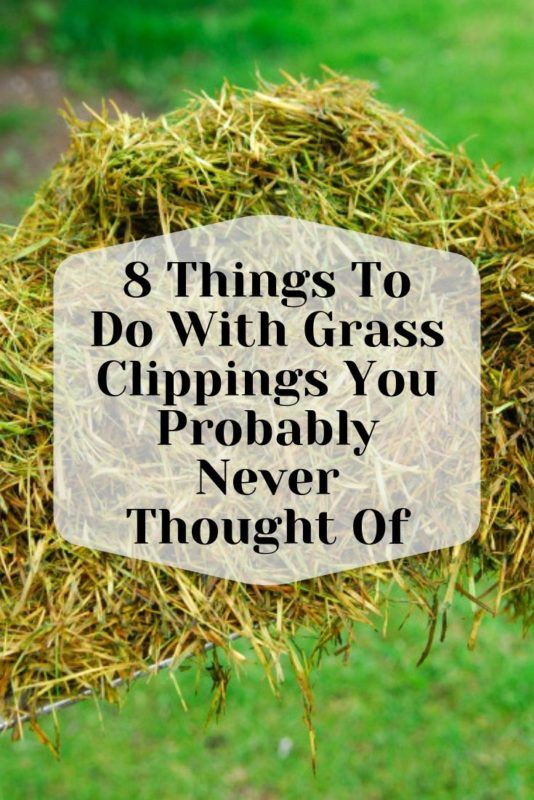
Those with lawns big and small will know how much of a chore cutting the grass can be. But even worse – what do you do with all the grass clippings once you’ve finished mowing?
The Environmental Protection Agency (EPA) estimates that yard waste accounts for 18% of the refuse that we dump into landfills – rising to 50% during the growing season! Approximately 75% of this waste comprises grass clippings (circa 1,500 pounds annually), with the remainder being tree leaves and limbs.
Given that landfills are beginning to run out of space – and many have banned grass clippings anyway – isn’t it about time we put our grass clippings to better use?
Here are eight ways to use grass clippings you probably never thought of…
1. Leave Them on the Lawn
If you’re striving for a perfect lawn, you probably remove your glass clippings every time you mow. But you’re actually robbing the grass of certain nutrients that it needs to thrive.
In future, leave your short clippings lie, as they will break down quickly, nourishing the grass and turning it a perfect shade of green. In fact, grass clippings can add back up to 25 % of the nutrients that growth removes from soil! These clippings also encourage beneficial microorganisms and earthworms that digest this grass and maintain healthy soil.
However, clippings that are too long won’t break down and will leave the lawn looking unsightly. To avoid this, you may need to mow more often – removing no more than one-third of the grass blade each time. Despite more frequent cutting, you’ll still be saving time by neglecting to collect the clippings! Studies show that it takes less overall time to mow more often and leave clippings on the lawn, compared to mowing weekly and bagging clippings.
Note that if your lawn is showing disease or is full of weeds, tackle these issues before leaving the grass clippings lie, as this will only exacerbate the problem.
2. Animal Feed
Grass clippings can be used to make silage for cattle feed. Some tests have found that silage made from recent clippings has a protein content of 18.2%, and a digestible matter content of 68% – much higher than hay, which typically averages a digestible matter content of about 59%.
In addition to feeding cattle, grass clippings may be a viable supplementary food source for sheep. Results from several studies indicate that grass clippings can be effectively and safely utilized as inexpensive, renewable feed sources for these woolly creatures.
Even if you don’t have animals of your own, check if your neighbors or local farm owners would be interested in using your grass clippings for their cattle and sheep.
Remember: never use clippings from grass that has been chemically treated to feed animals.
3. Compost
If you don’t want to leave them on the lawn, one of the easiest ways to put grass clippings to good use in your garden is by composting them. Once you prepare and treat the clippings in the right manner, you’ll be able to recycle the nutrients from the grass in other areas of your garden.
A proper compost pile requires a mix of green and brown materials. Freshly cut grass is considered ‘green’, and so will need to be balanced out by the addition of some brown material, like dry leaves, branches, twigs or paper. When adding fresh grass clippings, make sure to turn the grass into the pile to enhance aeration and prevent compaction.
Alternatively, you can leave your grass clippings to dry out completely and turn brown when, unsurprisingly, they are considered brown material!
To learn more about proper composting methods, check out this post: Composting 101.
4. Lawn Clipping Tea
Making a tea out of compost and compostable items is a great way to suppress disease, increase the amount of nutrients available to plants, speed up the breakdown of toxins, and improve the nutritional quality and flavor of vegetables.
To brew a lawn clipping tea, place your freshly cut grass in a bucket of water and allow to steep. Beneficial nutrients like potassium, nitrogen, phosphorous, chlorophyll and amino acids will leech from the grass into the water. After three days or so, strain off the liquid and use it to feed your plants by pouring onto the roots or spraying on the leaves.
Here are some other tips and recipes for making homemade fertilizing teas.
5. Mulch
Mulch is the term used to describe any type of material that is spread over the surface of the soil as a covering. Organic mulches help to retain moisture, suppress weeds, keep the soil cool and improve its fertility.
Grass clippings, either fresh or dried, make an excellent organic mulch which contains high amounts of nitrogen, something all plants need to grow and flourish.
Lay a quarter-inch thick layer of fresh clippings around flower and plant beds for a free, organic mulch. If it’s thicker, the grass won’t be able to break down fast enough and may begin to smell as it decomposes. Dried clippings – which make a great mulch for vegetable crops – can be spread on thicker.
6. Raised Beds
Raised bed gardening is one of the best ways to garden – find out why here! If you maintain a container garden or raised beds, then you’ll be happy to hear they are a great way to use up your excess grass clippings.
To improve soil quality and boost your yield, consider utilizing the Lasagna Method of soil mixing. It involves creating several layers of material to fill the bed and nourish your plants.
In the lower regions of the beds, layer one part grass clippings with two parts shredded leaves – these will slowly compost over time into rich soil. The clippings should be layered thinly to prevent matting. Once the beds are almost full (within six to twelve inches from the top), add a compostable barrier like cardboard and fill the remainder with your chosen soil mix.
7. Natural Dye
Grass clippings make a great natural green dye color for Easter eggs, but you could also try it as an organic fabric dye! Find out how to mix it up here.
8. Recycling Center
If you’re producing more grass clippings than you can use, then the best option is to take your unwanted clippings to your local recycling center who will dispose of them in a green and clean manner.
What Not To Do – Burn Them!
Along with the fact that open burning of grass clippings or leaves is prohibited by law in many states and countries, the incineration of damp grass clippings or other green materials creates thick smoke which can be harmful to health and the environment.
That said, researchers at the Agricultural Research Service in Albany, California, have discovered how to turn ordinary grass clippings into environmentally friendly fireplace logs which could be on sale in the future – keep your eyes peeled!
Pin This To Save For Later

